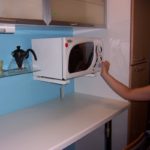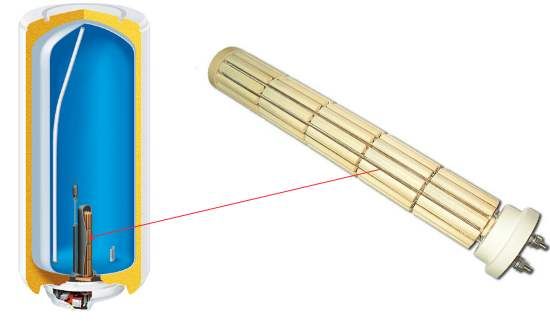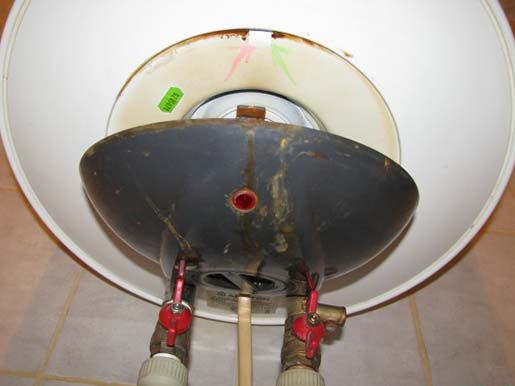How to hang a water heater on the wall
A water heater is an integral part of many homes. With its help, you can always be sure that there is hot water at home. However, during installation work, a difficulty arises - how to mount the water heater on the wall? Today we will talk about this in more detail.
The content of the article
Mounting features
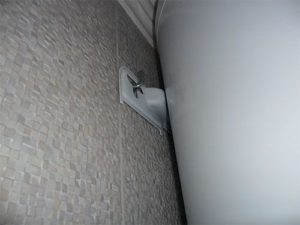 Before proceeding with installation, it is necessary to visually and technically familiarize yourself with the device. This information can prepare you for future work, and will help you become more familiar with the fastening features:
Before proceeding with installation, it is necessary to visually and technically familiarize yourself with the device. This information can prepare you for future work, and will help you become more familiar with the fastening features:
- It is recommended to position the device taking into account future electrical wires and water supply (or with the possibility of convenient access to manually replenishing water - depends on the type of heater);
If the building project is only at the construction stage, then it is worth paying increased attention to this issue. It is better to immediately install sockets with protection from dust, with the possibility of emergency shutdown if water gets into them. Water supply pipes must be installed in a location where they can be reached and repair work carried out (if necessary). It is not recommended to use “flexible” pipes, they quickly become unusable, better made of copper, or “hard” plastic pipes.At the same time, it is worth showing concern about the future design and appearance of the apartment - this is laid down during the design and at the construction stage.
- It is worth worrying about a special cabinet in which the installation will be carried out;
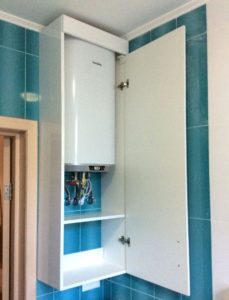 A special cabinet is the best place to install a water heater. He will be able to protect him from accidental blows and visually “hide” him from prying eyes. It is recommended to install it in a special place. Making a cabinet is not difficult, but you should worry about this feature in advance.
A special cabinet is the best place to install a water heater. He will be able to protect him from accidental blows and visually “hide” him from prying eyes. It is recommended to install it in a special place. Making a cabinet is not difficult, but you should worry about this feature in advance.
- It is necessary to ensure that the walls are sufficiently strong and that the humidity level is satisfactory.
There are different types of walls (we'll talk about this a little later), but you need to initially estimate that the weight of the heater will be supported by the wall. It is important to have an idea of its strength - it must be sufficient to withstand the given weight (and the weight of future heating systems). Humidity can destroy the fasteners and render the internal parts of the heating elements unusable, which is unacceptable, since the humidity level must be at a satisfactory level. If the humidity is too high, it is recommended to consider changing the mounting location to a more suitable one.
These features are important information that you should have on your pencil, which will allow you to carry out the installation correctly and reliably!
Necessary parts, tools
For fastening you will need a small set of tools and parts:
- Construction pistol;
- Hammer;
- Electric drill;
- Steel hooks (10 mm);
- Dowels.
How to secure - instructions
- Using a construction gun (or drill), holes are drilled in the wall into which a screw is placed for fastening.
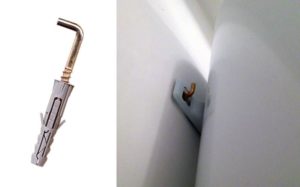 They come complete with a hook; additionally (for better fixation) it is recommended to use dowels. Dowels come in different types and must match the type of wall.
They come complete with a hook; additionally (for better fixation) it is recommended to use dowels. Dowels come in different types and must match the type of wall. - For better adhesion of screws, you can add a small amount of epoxy resin.
- After installing the “nest” (the entire first point), the hook is screwed on.
- The water heater is being secured. It is suspended by special fasteners (brackets) that are provided in its body.
Ready! The water heater is secured!
How to attach to walls made of different materials
Due to the fact that different houses have different types of walls, it is worth knowing about the features of fastening to certain, most common types of materials.
Drywall
 Drywall has a soft structure, which makes this type of wall the most difficult type to attach. It is better to use metal linings for the dowel, which increase the area of pressure on the wall. Such overlays are sold at any hardware store; if desired, you can make them yourself from a thin sheet of metal.
Drywall has a soft structure, which makes this type of wall the most difficult type to attach. It is better to use metal linings for the dowel, which increase the area of pressure on the wall. Such overlays are sold at any hardware store; if desired, you can make them yourself from a thin sheet of metal.
It is better not to attach heavy loads (more than 100 kilograms) to drywall.
Foam concrete
To secure dowels into foam concrete, it is better to use their nylon counterparts, which are shaped like spirals. Their purpose is to work with foam concrete walls. They will be able to take into account the features of the wall and provide maximum grip.
To install heavy devices, it is recommended to use metal dowels with a nylon lining.
Concrete
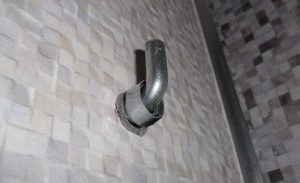 For fastening to concrete, the same advice applies as for foam concrete, with one condition: instead of nylon dowels, it is better to initially install metal ones, since concrete does not allow their further replacement with another type of dowel.Also, concrete creates a lot of noise (during work), if installation work takes place in multi-storey buildings, then try to choose a time for work when this noise will not cause inconvenience.
For fastening to concrete, the same advice applies as for foam concrete, with one condition: instead of nylon dowels, it is better to initially install metal ones, since concrete does not allow their further replacement with another type of dowel.Also, concrete creates a lot of noise (during work), if installation work takes place in multi-storey buildings, then try to choose a time for work when this noise will not cause inconvenience.


